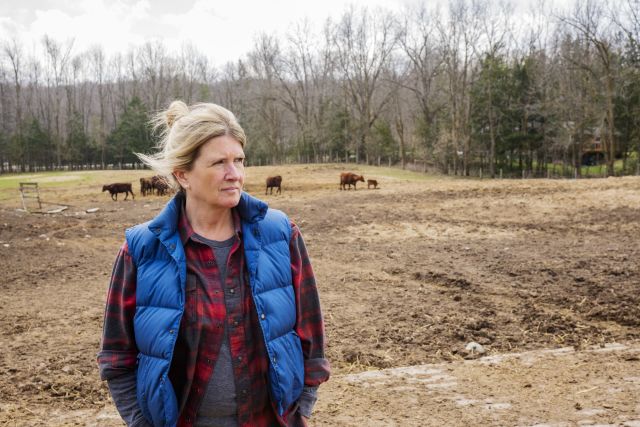Updated on October 19, 2023.
People living in rural communities in the United States have traditionally fared worse across a variety of health measures, compared to people living in cities and suburban areas. Geographic isolation in rural areas can hinder access to resources that play a role in health and well-being, including access to quality healthcare, food, and job opportunities. Educational achievement and income levels have historically also measured higher in urban centers.
In 2019, Sharecare’s Community Well-Being Index (CWBI) demonstrated how the COVID-19 pandemic underscored this growing geographical divide.
The CWBI showed how Americans living in rural parts of the country experienced lower levels of well-being. These measures were based on social determinants of health, the factors that describe the environments in which people live, work, learn, and play that affect health and quality of life. They include access to quality healthcare and education, safe and affordable housing, transportation, food security, and financial stability.
For example, the 46 million people living in rural America are more likely to die from heart disease, cancer, chronic lower respiratory disease, and stroke than people living in urban areas, according to the Centers for Disease Control and Prevention (CDC). Rates of fatal accidents are also about 50 percent higher in rural communities. (Fatal accidents, described by the CDC as “unintentional injury deaths,” include car crashes and opioid overdoses.) People in rural areas also tend to be older and in worse health than city dwellers, the CDC notes.
“Inequities in health in rural America have been well established, including everything from lower levels of education to higher rates of obesity and diabetes,” says David Hess, MD, dean of the Medical College of Georgia at Augusta University in Augusta, Georgia. “To make matters worse, and in places like Georgia, these individuals also struggle to receive access to care, which is impacted by seven rural hospital closures since 2010, 41 percent of counties having no pediatricians, and almost half of counties in Georgia having no OGBYNs.”
Rural areas had lower resilience pre-pandemic
Even before the pandemic began, rural counties generally exhibited lower levels of well-being and social determinants of health, according to the 2019 CWBI, which was published in collaboration with Boston University’s School of Public Health (BUSPH) and Biostatistics and Epidemiology Data Analytics Center (BEDAC).
The CWBI defines well-being across five domains:
- Purpose: liking what you do each day and being motivated to achieve your goals
- Social: having supportive relationships and love in your life
- Financial: managing your economic life to reduce stress and increase security
- Community: liking where you live, feeling safe and having pride in your community
- Physical: having good health and enough energy to get things done daily
The CWBI and BEDAC found that individuals in counties classified as urban achieved well-being scores more than 1 point higher than their rural counterparts. In terms of the social determinants of health, counties considered urban achieved scores more than 6 points higher than their rural counterparts.
These findings underscore a stark geographic divide that contributes to individuals’ ability to achieve good health and optimal levels of well-being.
Some states have greater well-being in rural areas
While urban areas in the U.S. are generally associated with greater well-being and social determinants of health, the CWBI report revealed notable exceptions, including 7 of 47 states with both rural and urban counties seeing higher levels of well-being in rural counties:
- Alaska (+0.49)
- Arizona (+0.41)
- Delaware (+3.2)
- Montana (+0.6)
- Nevada (+1.07)
- North Dakota (+0.64)
- Wyoming (+2.29)
While almost 15 percent of states saw improved well-being scores in rural counties compared to urban counterparts, Wyoming was the only state with both rural and urban counties that saw higher social determinants of health scores in rural counties.
Why did some rural areas fare better than expected? While rural communities do experience health challenges related to factors such as geographic isolation, many also exhibit health-protective traits.
Economic prosperity, for instance, is a known protective factor at both a societal and individual level, and many rural counties do attract financial investment. In Wyoming, residents have invested heavily in the economic well-being of rural areas located near National Parks, leading to economic Social Determinants of Health index (SDoHi) scores that are comparable in both urban and rural designated counties.
Social support is also known to contribute to better health outcomes, even among rural elderly populations. Wyoming, for example, had slightly higher well-being scores for ‘social’ and ‘purpose’ among rural counties.
“Put simply, while rural communities on the whole face challenges nationwide, many rural areas exhibit health-protective factors such as fiscal investment or strong social support, which can turn the tide in favor of the community,” says Nina Cesare, PhD, a research scientist and SDOH expert at BEDAC.
COVID-19 strained resources in urban and rural areas alike
America’s large and more densely populated cities and suburbs faced early spikes in COVID infection rates and deaths. Those trends eventually reached rural America, which generally has reduced access to health care.
Since 2005, 193 rural U.S. hospitals have either closed or stopped providing inpatient care, according to the Cecil G. Sheps Center for Health Services Research at the University of North Carolina at Chapel Hill. Hundreds more are at risk of closure due to financial issues. Fewer people seeking inpatient care and Medicare payment reductions have led to unsustainable financial strain on these medical facilities, according to the U.S. Government Accountability Office (GAO).
The result is a perfect storm for rural America: a dwindling number of hospitals that are working with fewer resources but treating more patients with severe illnesses.
Identifying solutions to close the gap
“The CWBI can help identify areas that might be at risk,” according to Cesare. “By identifying the obstacles to health and well-being among rural communities, solutions may be developed to mitigate these disparities and close the geographical divide in America.”
Remedies may include expanding telemedicine services in areas where healthcare access is limited, as well as public health campaigns to educate and support rural communities.
“Because rural America already exhibited vulnerability pre-COVID-19, it is critical we address risk from multiple standpoints, including education, infrastructure support, and innovative approaches to healthcare access,” Dr. Hess says.






